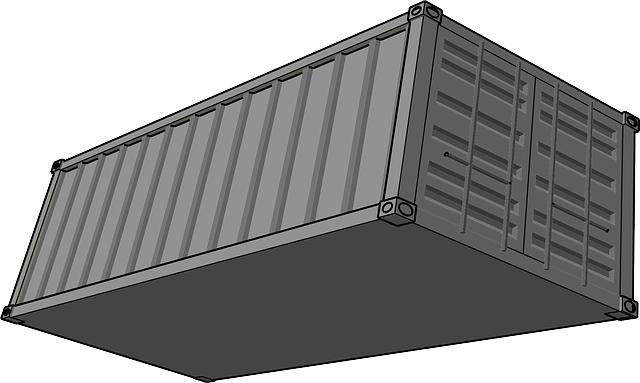Independent truckers face high-risk scenarios like long hours, varying weather, and unfamiliar territories. To address these risks, they seek affordable policies tailored to their specific needs, including liability, collision, and cargo protection. By maintaining clean driving records, leveraging technology for monitoring, negotiating rates directly with insurers, joining industry associations, and adopting proactive risk management practices, truckers can find quality coverage at manageable costs, balancing protection with budget without compromising on either.
In the dynamic world of trucking, balancing risk and budget is a constant challenge for independent operators. With ever-changing road conditions and regulatory landscapes, understanding high-risk scenarios is crucial for making informed coverage decisions. This article delves into strategies that help independent truckers prioritize affordable policies while mitigating potential risks. By exploring key factors influencing cost and exploring practical tips for balancing risk and budget, operators can navigate the landscape with confidence, ensuring both safety and financial stability.
Understanding High-Risk Scenarios for Independent Truckers

For independent truckers, understanding high-risk scenarios is key to prioritizing coverage while keeping costs low. These scenarios can include long hours on the road, varying weather conditions, and navigating unfamiliar territories, all of which increase the likelihood of accidents or damage to vehicles and cargo. By identifying these risks, truckers can tailor their insurance policies to cover specific needs without overspending.
Affordable policies for independent truckers often include comprehensive coverage that protects against a range of potential hazards. This might include liability coverage to protect against damages caused to others, collision coverage for vehicle repairs, and cargo protection to safeguard valuable goods during transit. Additionally, many insurers offer discounts for safe driving records, regular maintenance of vehicles, and adherence to industry safety standards, further enhancing affordability.
The Impact of Cost on Coverage Decisions

When prioritizing coverage for high-risk scenarios, cost plays a pivotal role in decisions made by independent truckers. Given the inherent risks associated with their profession—from mechanical failures to accidents and legal liabilities—ensuring adequate protection while keeping expenses manageable is a delicate balance. Many independent truckers opt for customized, tailored policies that offer specific protections relevant to their operations, rather than one-size-fits-all plans. This approach allows them to access affordable policies that address their unique needs without unnecessary extras.
The quest for affordable policies doesn’t mean compromising on quality or coverage. By evaluating different providers and understanding the market dynamics, independent truckers can find competitive rates without sacrificing protection. Leveraging technology and digital platforms also facilitates comparison shopping, enabling truckers to identify the best value for their money in terms of both coverage and cost.
Strategies to Prioritize Affordable Policies

To prioritize affordable policies for independent truckers, a strategic approach is essential. One effective method is to bundle coverage options into comprehensive packages tailored to mitigate high-risk scenarios without breaking the bank. Insurance providers can offer discounted rates by combining liability, cargo protection, and vehicle maintenance plans. Additionally, leveraging technology for risk assessment and claims management can lower costs significantly. Telematics devices that monitor driving behavior and vehicle performance in real-time provide data-driven insights to insurers, enabling them to offer more personalized and cost-effective policies.
Another strategy involves negotiating rates directly with insurance companies or utilizing wholesale brokers who specialize in trucking insurance. Independent truckers can also benefit from joining industry associations that negotiate group policies, ensuring they access competitive pricing. Moreover, maintaining a clean driving record and claiming fewer losses encourage insurers to offer lower premiums. Staying informed about regulatory changes and industry trends allows truckers to make informed decisions when shopping for affordable policies.
Balancing Risk and Budget: Tips for Successful Coverage

For independent truckers, balancing risk and budget is an art that requires careful consideration to ensure safe operations while keeping costs low. When prioritizing coverage for high-risk scenarios, such as cargo theft or accidents involving heavy machinery, it’s tempting to opt for comprehensive policies. However, this approach can significantly increase premiums. Instead, focus on tailoring your insurance to specific needs and risks. For instance, if you primarily transport valuable goods, consider specialized cargo insurance that covers against theft and damage.
Opting for affordable policies doesn’t mean compromising on quality. Research and compare different providers offering tailored plans for independent truckers. Many companies now provide flexible coverage options, allowing you to choose the level of protection needed without unnecessary extras. Additionally, staying proactive in risk management practices can further reduce costs. Regular vehicle maintenance, safe driving habits, and securing cargo securely are cost-effective ways to minimize potential losses, thus keeping your insurance expenses manageable.
For independent truckers, balancing risk and budget is key. By understanding high-risk scenarios and their potential costs, coupled with strategic policy prioritization, it’s feasible to secure affordable coverage without compromising safety. Implementing these tips allows drivers to navigate the insurance landscape effectively, ensuring they stay protected while keeping expenses low. This approach empowers them to focus on the road ahead, confident in their coverage choices.
